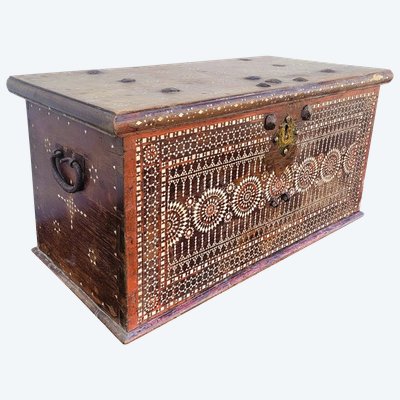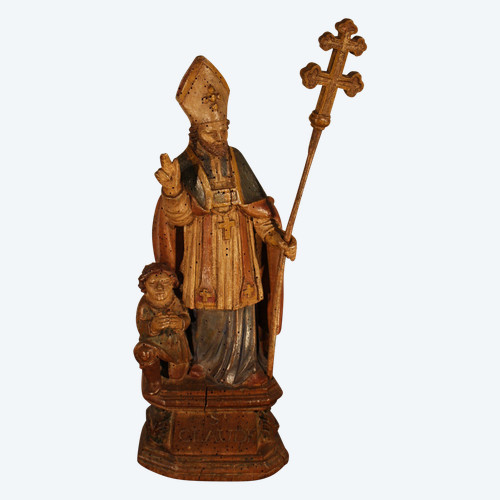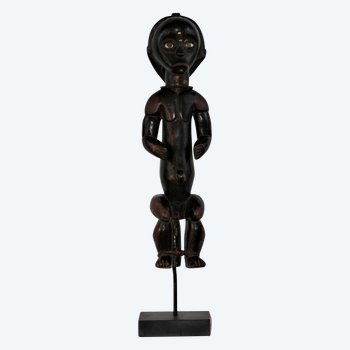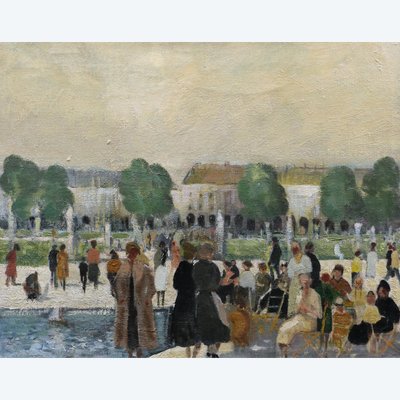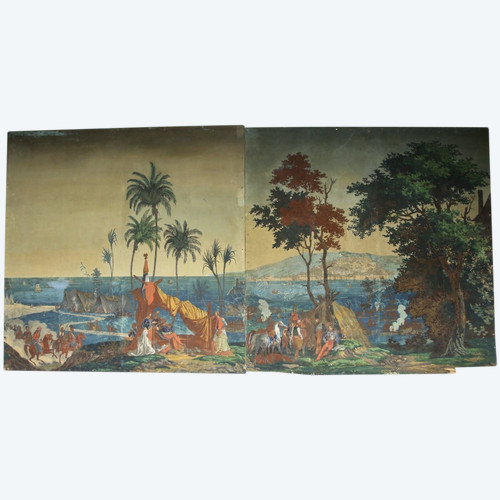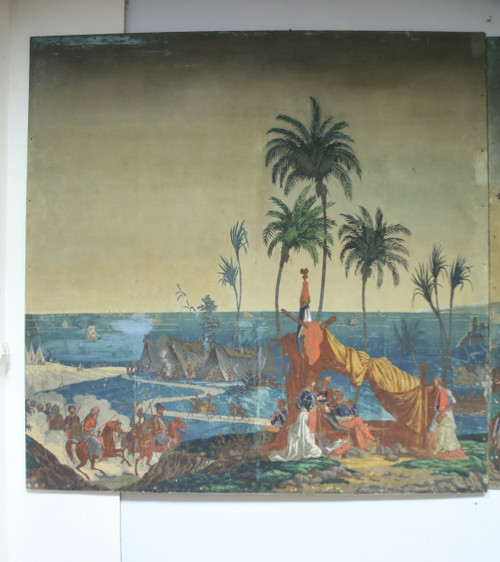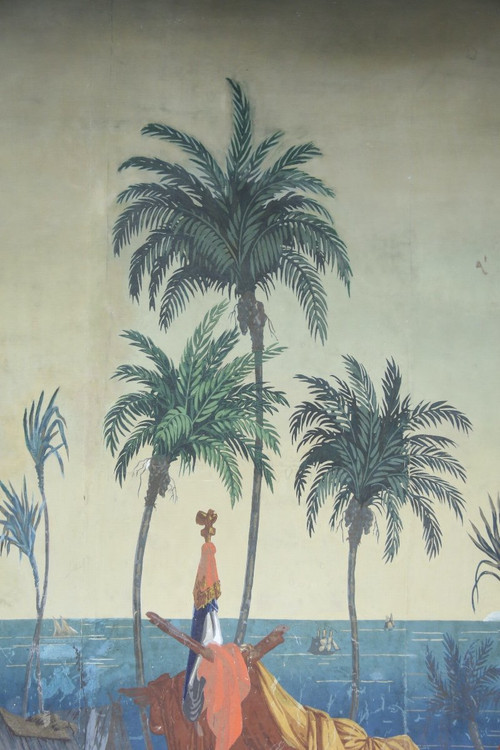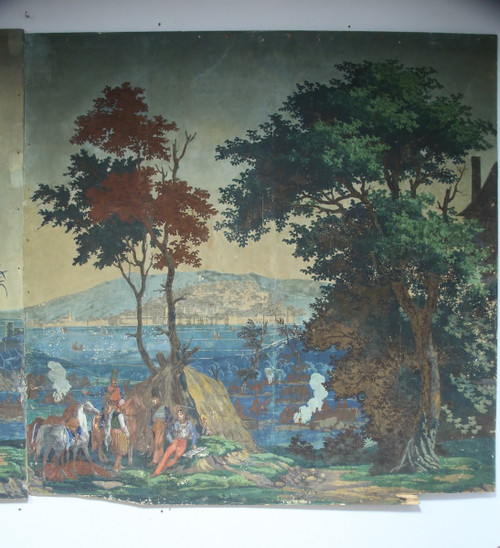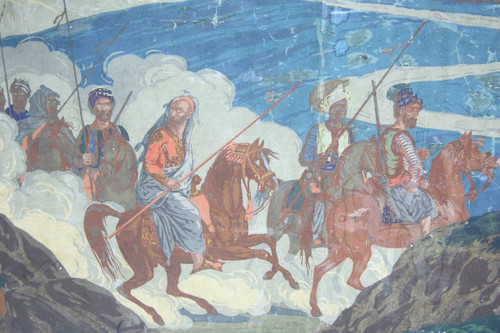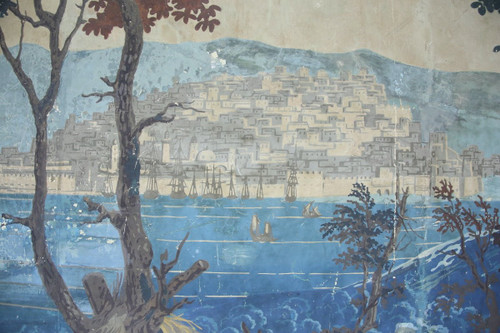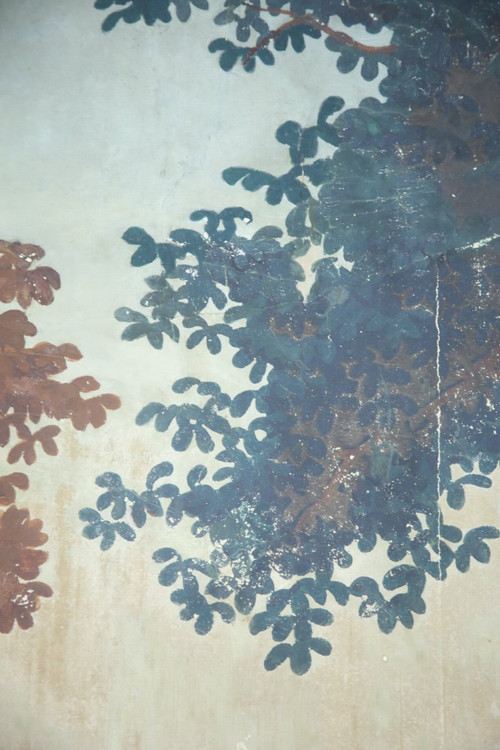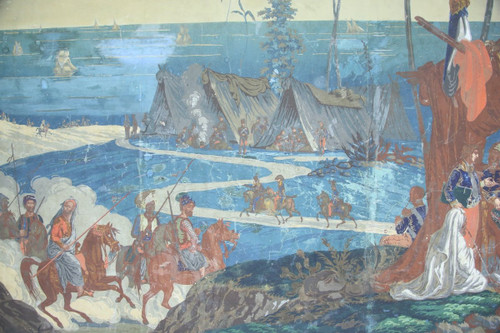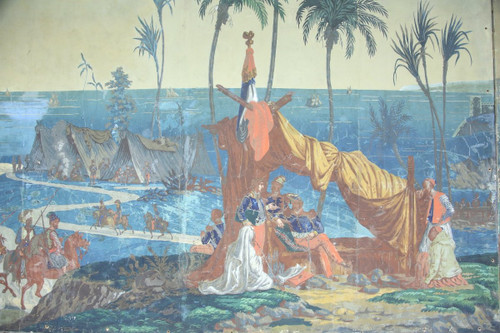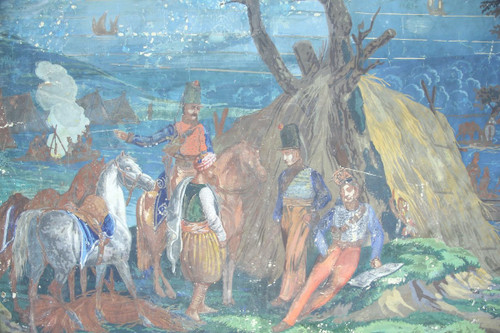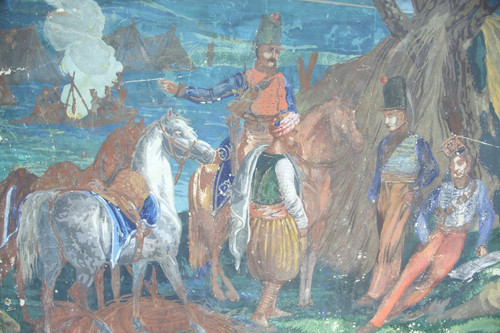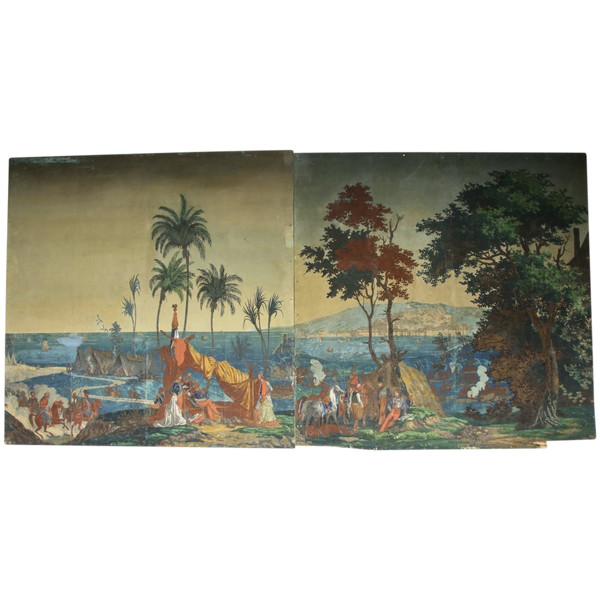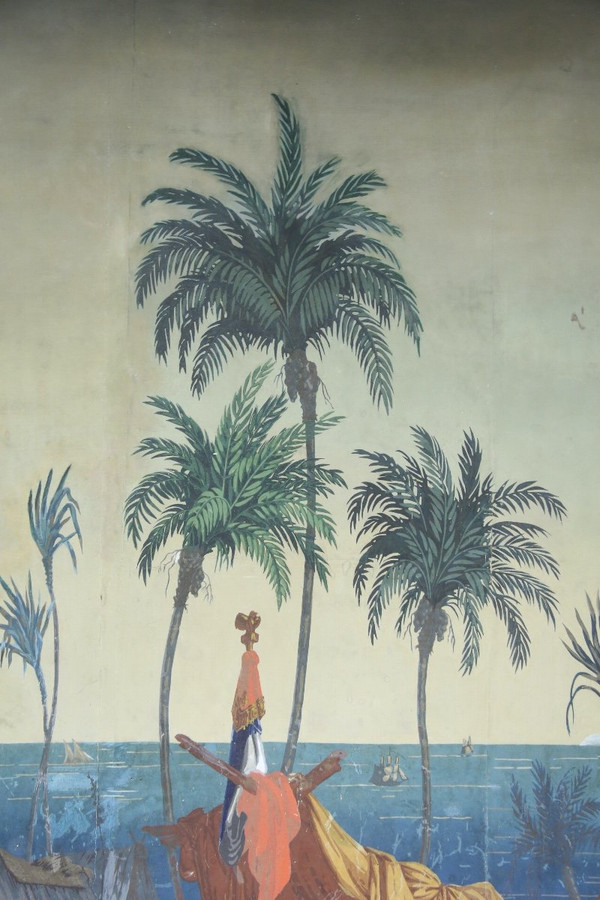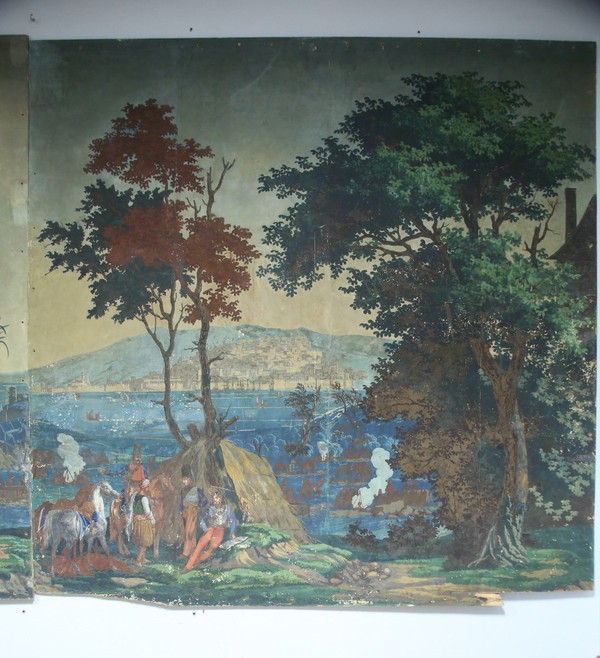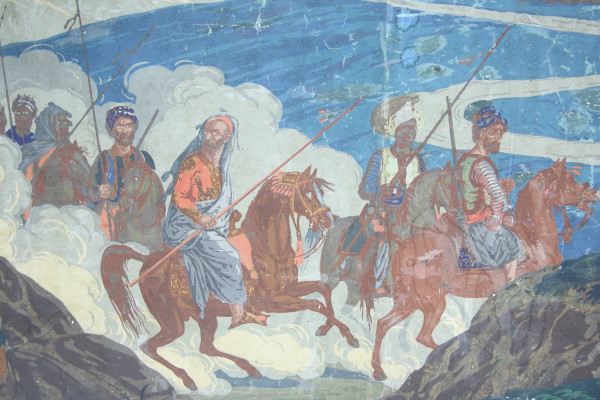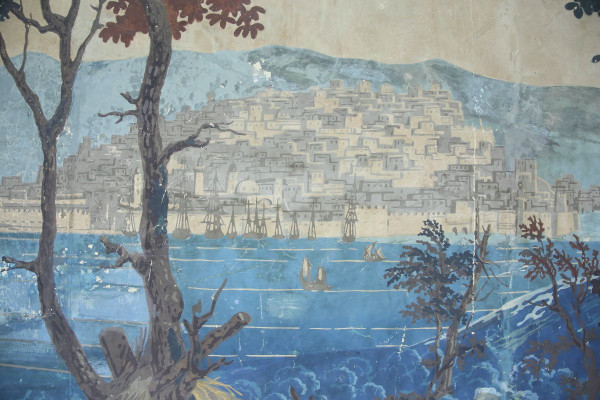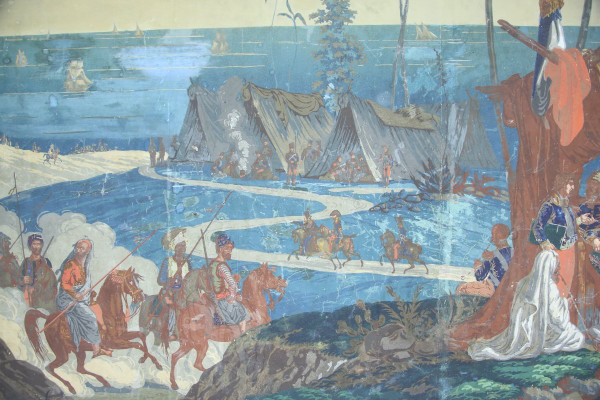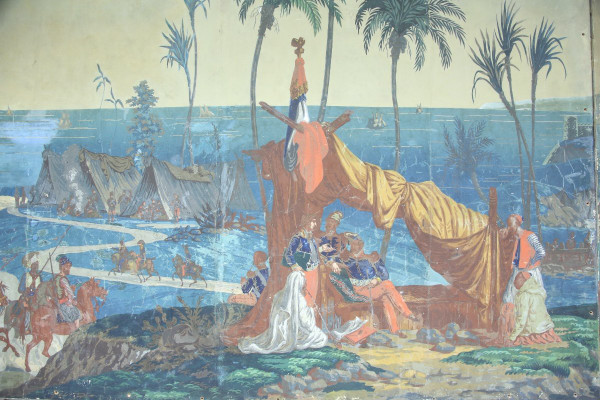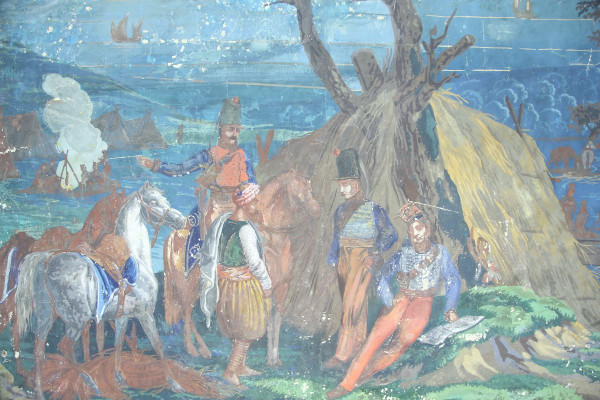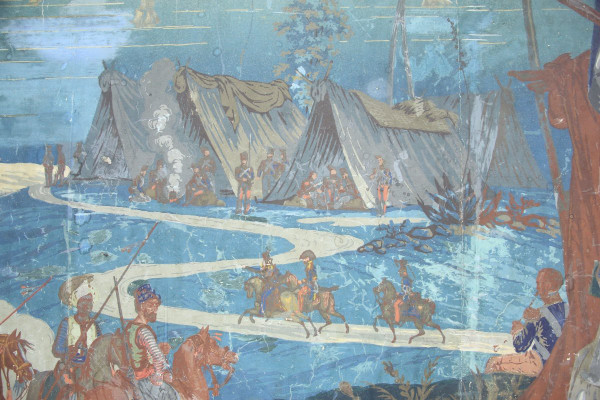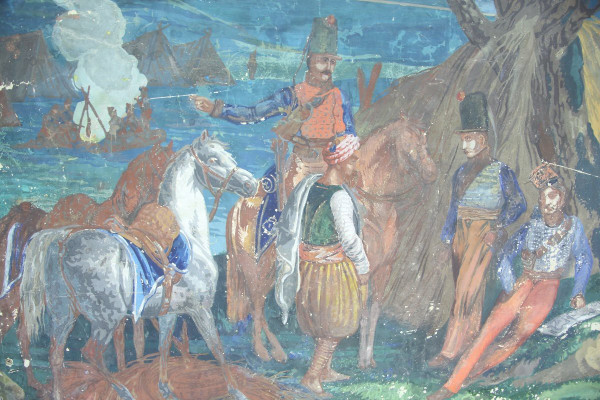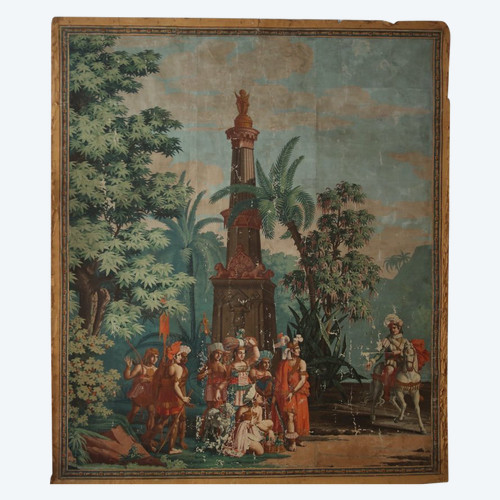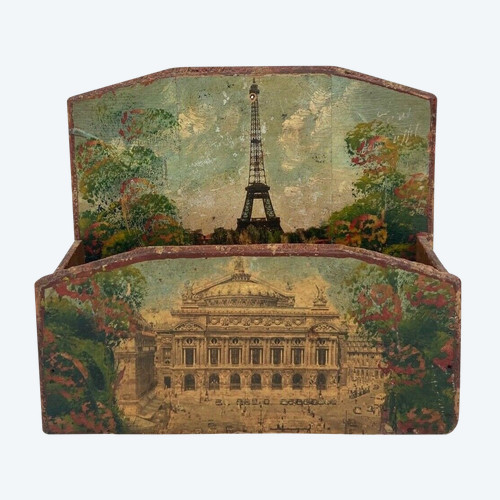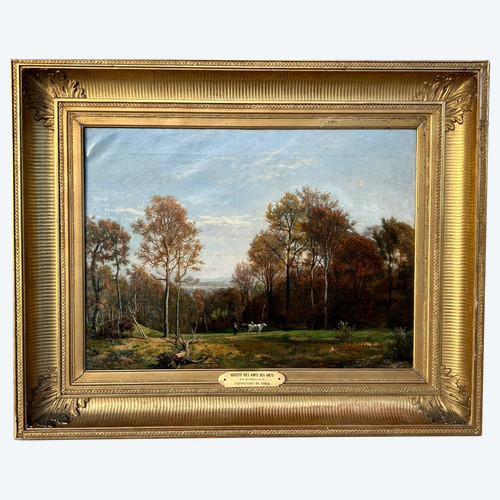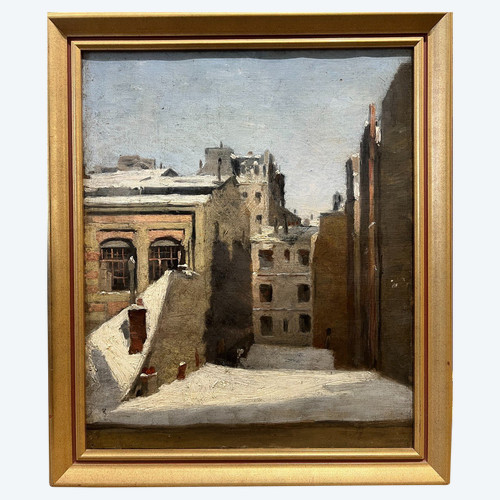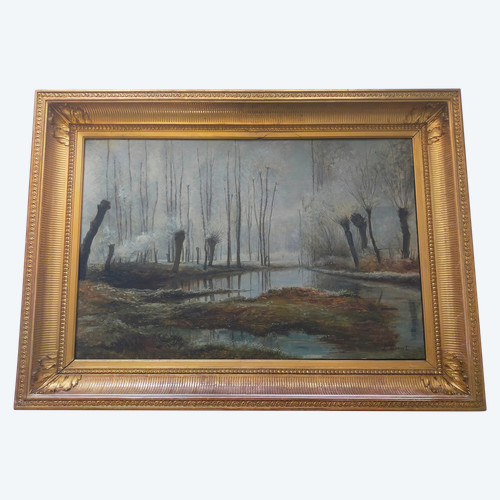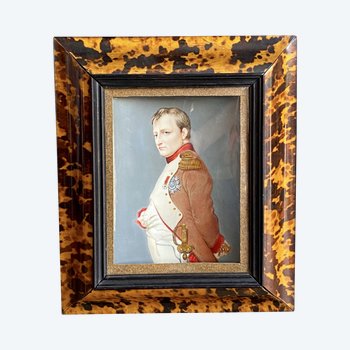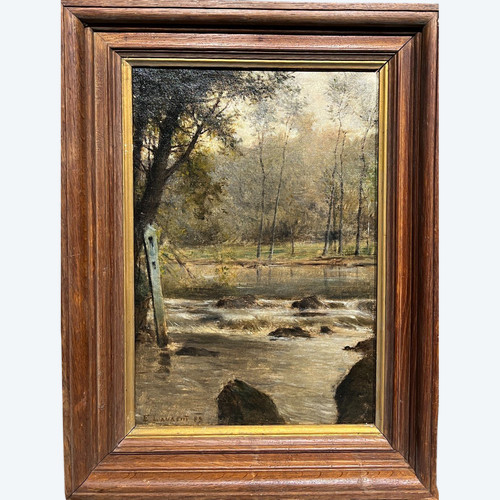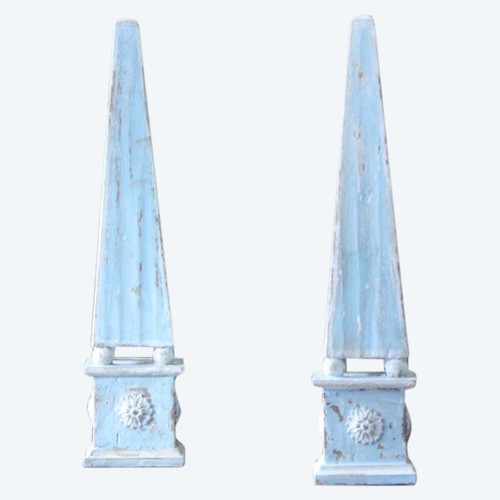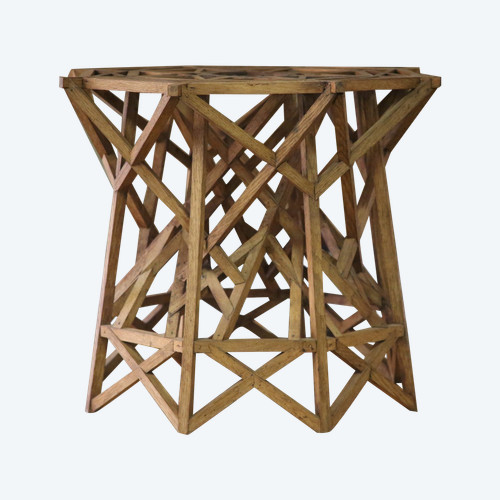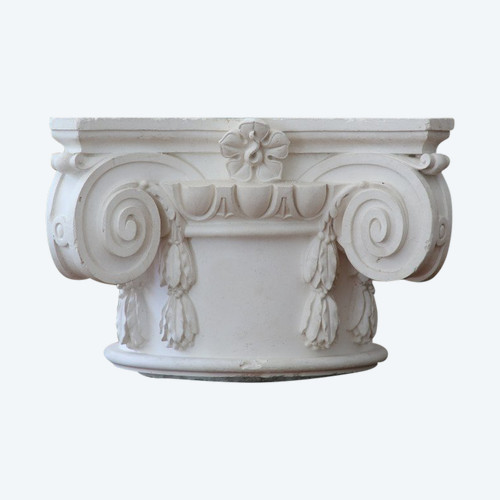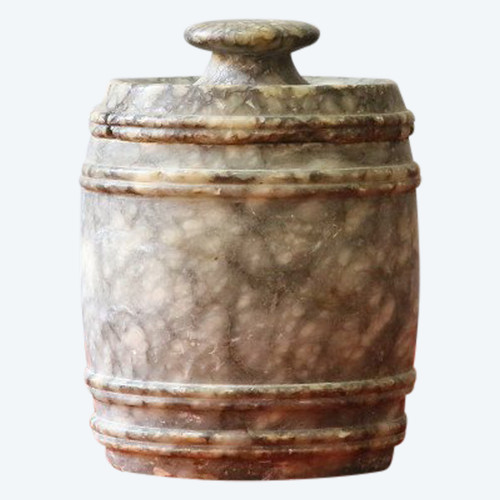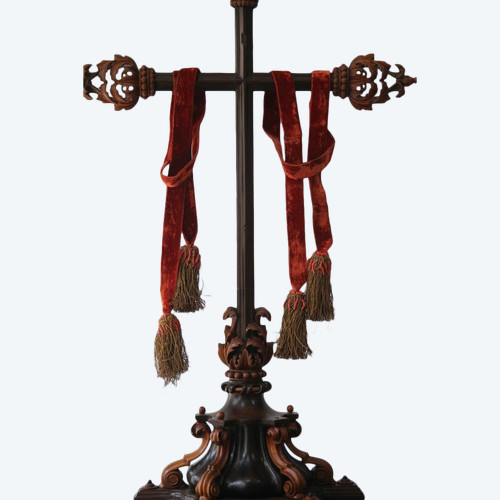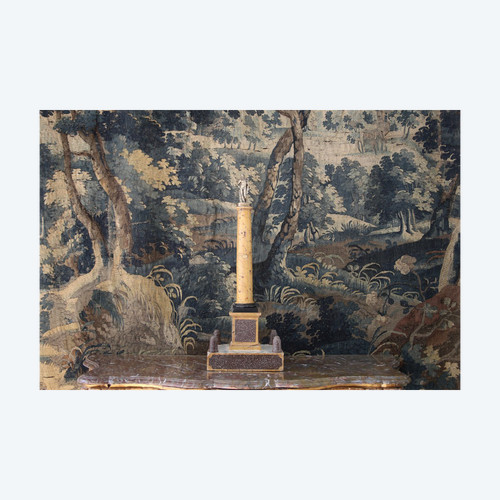This description has been translated and may not be completely accurate. Click here to see the original
Suite of 8 strips of wallpaper from the "Paysages pittoresques" panorama after Louis-Joseph Dufour.
-Period: Second half of the 19th century by the Desfossé et Karth factory.
Paper technique, hand-brushed background, woodblock color printing.
Condition: 8 lès marouflés on two interconnecting plywood panels. Chips, wear, restorations
Total dimensions : 410 cm x 205 cm ( 2 panels of 205 cm x 205 cm)
The complete set of this panoramic entitled "Paysages pittoresques" comprises 30 color-printed strips. The original design was created by Manufacture DUFOUR in Paris around 1832, then republished in the second half of the 19th century by Desfossé & Karth.
The motifs were printed in full color on a woodblock, with the exception of the backgrounds, which were hand-brushed to achieve the subtle gradation of the skies.
-The panels (23 to 30) depict a cavalcade of Arab riders, a French camp with a Gallic cockerel on top of a tent, and a few deciduous trees showing the beginnings of a Norman house (this last motif links up with the very first panel of the panorama, which depicts a view of the Normandy coast).
-The motif is printed mainly on the lower part of the strip, so that the eye meets the scenes "naturally", as the wallpapers are placed above the supporting furniture, about one metre above the floor. To get around the difficulty of connecting one wallpaper to another, the designer ensured continuity of horizontal reading by a succession of landscapes with scenes of people scrolling past in the foreground, and by seascapes in the background that unify the composition.
-Perspective plays an important role in the rhythm of the landscape. This is why panoramic artists use a number of techniques to "punch holes" in the wall surface, to create depth, as in this case with the staggered planes and the stretches of sand that go on ad infinitum. In addition, the artist has created separating motifs to delimit the different regions: for example, the ditch where the Arab horsemen ride separates the Arab camp from the French camp.
-Vegetation also plays an important role. It gives rhythm to the composition without breaking continuity, and contributes to the discourse as it evolves from temperate deciduous trees to oriental palms and Mediterranean umbrella pines.
-These panoramic wallpaper strips are truly museum collectors' items, as the available corpus is very small. This rarity, intimately linked to the nature of the papers and the fact that they had to respond to changing fashions while being glued to wall surfaces, is easily explained.
About this "Paysage pittoresques" panorama in French public collections:
- strips 3 to 4 are held at the Musée de Bretagne (Rennes), inv: 979.0053.1
- a color lithographic model by Joseph Dufour (1832) is held at MAD Paris, inv. 51656/6A
- a black-and-white advertising lithograph of strips 16 to 30, published by CLERC MARGERIDON et Cie, fabricants de Papiers Peints is held at MAD Paris, inv. 51656/6B
-Both Dufour and Zuber were pioneers in the design and production of panoramic prints in the 19th century.
Ref: O53US039FC
 Saint-Claude 17th century
1.100 € EUR
Saint-Claude 17th century
1.100 € EUR

